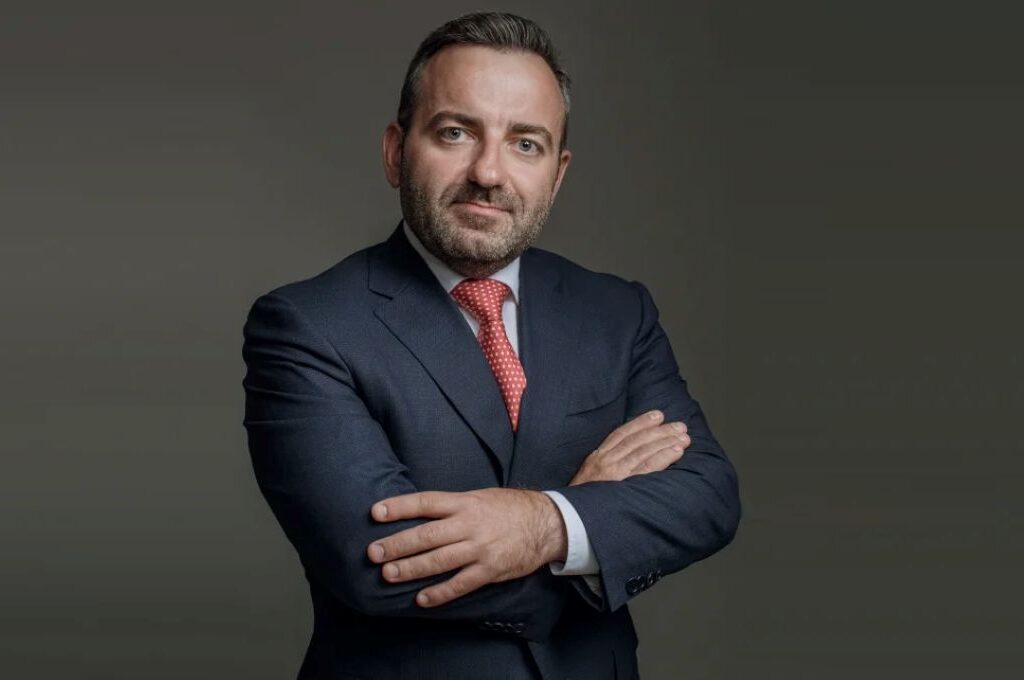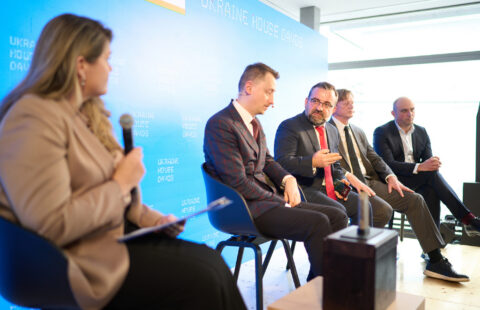
“Nothing shifts a country’s perception like its first profits.” How can Ukraine transform its natural resources into billions for its economy and security? An interview with Serhii Voitsekhovskyi
(Article from Forbes Ukraine, January 2024)
Ukraine’s subsoil holds 22 critical materials valued at hundreds of billions of dollars, says Serhii Voitsekhovskyi. In an interview with MHP’s top manager, Dmytro Zozulia, he discusses what Ukraine needs to do to dominate the critical materials mining market and build a leading economic sector around these resources.
According to Voitsekhovskyi, a member of the Board of Directors at BGV Group Management (owned by Hennadii Butkevych, a founder of ATB, one of the leading retail trade companies in Ukraine), Ukraine has a unique opportunity to leverage its vast mineral reserves for economic growth and national security. Of the 34 critical materials (CRM) identified by the European Commission in March 2023, Ukraine possesses a 22.
On October 16, President Volodymyr Zelensky presented the Victory Plan to the Ukrainian parliament, which includes a proposal to allow Western investors to develop strategic minerals, such as lithium.
“We have to be super fast,” says Voitsekhovskyi.
What minerals is Butkevych’s group investing in, how much are they investing, and what can Ukraine offer to attract international partners? How can mining become a key economic sector that strengthens Ukraine’s security?
THIS INTERVIEW HAS BEEN EDITED FOR CLARITY AND LENGTH.
What is your company’s business profile?
We are an investment company. We have a number of projects in the extractive sector, with total investments in this area exceeding $100 mln. We are interested in three sectors: the first and largest is critical materials, the second is oil and gas, and the third is construction materials.
In CRM, we prioritize graphite as a critical energy material and beryllium, which is found in only a few countries. The company owns the Perzhanske beryllium deposit. The uniqueness and complexity of this deposit lie in its composition. In addition to beryllium, it contains a variety of other elements, including critical ones.
What is the importance of critical materials?
The US and the EU have designated certain materials as critical for the future economy. The development of several modern industries and enterprises is impossible without these materials. This includes the production of batteries for electric vehicles, nuclear power, and chip manufacturing.
In the US, there are two key documents: the Geological Survey defines 50 materials as critical, and 18 are classified as energy materials. In the EU, more than 30 materials are identified as critical. This list is constantly evolving and expanding. In Ukraine, a list of critical materials has also been established by a resolution of the National Security and Defense Council.
How many of these 50 materials are available in Ukraine?
Ukraine has more than 22 critical elements. We are focusing on two of them—graphite and beryllium—while also paying attention to rare earth elements.
What are Ukraine’s advantages in this sector?
The presence of deposits is our unique advantage. Many countries lack CRM deposits. We are developing a graphite deposit in the Kirovohrad region, while our industry partners are working on a nearby lithium deposit. This is unique—few countries have both graphite and lithium deposits in the same geographical area.
Ukraine possesses CRM, while the world remains highly dependent on Chinese supplies, creating demand for alternative sources. For any country, securing these resources is essential for its future, survival, and economic value creation.
According to our calculations, Ukraine could become a leading producer of anodes for battery production in Europe and the United States, despite China’s dominant 90% market share.
What value does the proximity of the deposits create?
First, mining involves extracting hundreds of thousands of tons of material, making logistics a crucial factor. Secondly, mining is not just about extraction—it requires an entire ecosystem, including scientific and geological research, engineering, and infrastructure. When projects are developed within a cluster, they gain significant advantages in efficiency and cost-effectiveness.
What does the integrated value chain look like, and how far do you aim to go?
As for dreams and long-term goals, there is a vision of the shareholder. Hennadii Butkevych has publicly stated that Ukraine could become a producer of small modular nuclear reactors. Historically, we have had many components for this.
For critical materials-based products, such as batteries for electric vehicles, multiple business environments exist where production can take place. However, the first step is mining—developing quarries, mines, and ore processing plants.In the graphite industry, for example, the next step after extraction is spherification.
If we process graphite into a high-purity concentrate, its value is around $1,000 per ton. Spherified graphite, prepared for battery production, reaches about $2,000 per ton. The next stage—coated spheroidal graphite—triples in value and starts from $3000.
While we all aspire to be at the top of the value chain, producing advanced technology like spacecraft, the journey starts with mining and value creation at the source. Using graphite as an example, we aim to produce a spheroidal high-quality material used for high-capacity batteries and other advanced technologies.
How much does your graphite project cost?
The construction of a complete production chain, including spherification, is estimated at around $400 million. Of this, the basic budget is $100-120 million for the construction of a mining and processing plant and achieving access to concentrate. The construction of a spherification plant is significantly more expensive, with costs ranging between $250-280 million.
Such an investment cannot be made by a single shareholder, particularly a private one. Therefore, it requires partnerships with major international financial institutions, investment funds, or large industry corporations. While mineral deposits are essential, they alone are not enough to attract these companies.
They will come to us when the project is ready to build or at least feasible. This stage follows three to five years of intensive work, requiring investments of up to 10% of the total project cost. It involves purchasing a license for millions of dollars, conducting exploration, confirming reserves, and developing project documentation. In Ukraine, it is necessary to invest up to $10 million to bring the project to a ready-to-build state.
We expect to complete the feasibility stage of our graphite project next year and be ready to begin construction by the end of 2025. We will have all the permits and opportunities for mining.
That is, the desired scenario is to attract not just international money, but also international expertise?
Any company working with critical raw materials (CRM) needs three things: money, technology, and expertise. The ideal situation is when you have a partner who can provide all three. However, even if a partner can provide at least one, it is already a significant advantage.
What could be the impetus for the development of the industry in Ukraine?
We are not new to the international market as a mining country. Ukraine has a solid foundation and history, and potential partners recognize that we have strong engineering capabilities and many specialized institutes. On the other hand, CRM projects involve greenfield developments, new technologies, and risks.
We need new successful cases of large projects and partnerships between Ukrainian and international businesses. Nothing shifts a country’s perception like its first profits.
What key steps are needed from the state and the private sector to create an enabling environment?
The key shortcoming of the country is its limited financial capacity. Beyond military risks, Ukraine is not an economic powerhouse that can, like China, invest billions to stimulate rapid growth. However, what Ukraine lacks in wealth, it can make up for in agility. The mining sector is heavily regulated worldwide. In China, for example, approvals, audits, and certifications take significant time.
Ukraine must set itself apart by being exceptionally fast and efficient in these processes. Speed can be a critical advantage. A strong push forward often comes from external pressure, and the government is now strategically recognizing the importance of Critical Raw Materials (CRM) as a key element in Ukraine’s integration into the global economy. However, there is still a lack of focus and expertise among those who can drive these processes forward and create an additional competitive edge.
Mining has the potential to be a major driver of Ukraine’s economy. It is an industry that requires significant infrastructure and, in many cases, can shape entire cities. The benefits extend further—new enterprises emerge, employing thousands of people, infrastructure expands, and hundreds of related businesses develop, creating a ripple effect throughout the economy.
The material was published in Forbes Ukraine magazine No. 4 [31]. October – November 2024.


